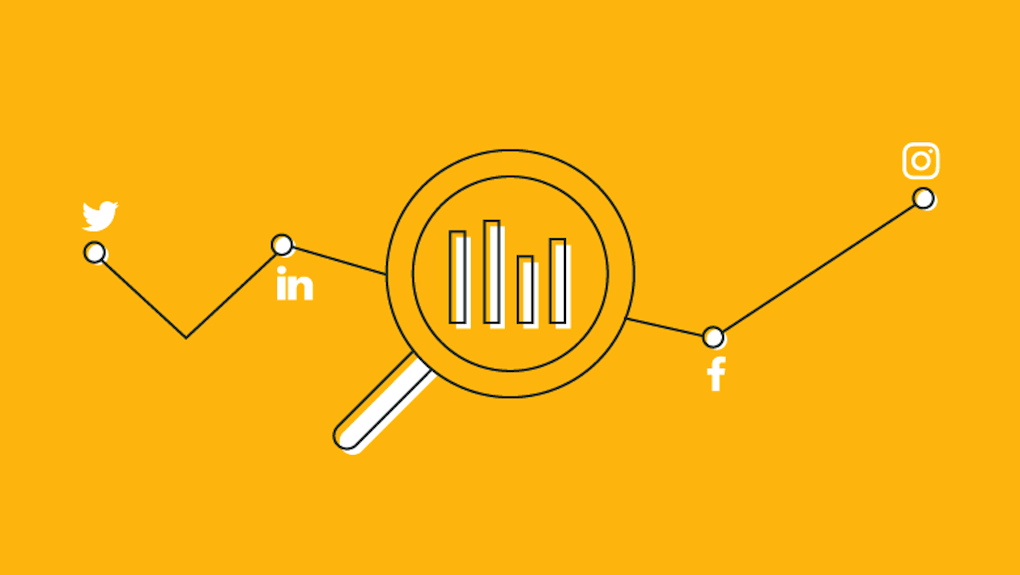Data is the cornerstone of any successful marketing campaign. With the right social media analytics tools, you can measure engagement, predict future trends, and keep up with customer feedback – all essential elements of your wider social media efforts.
Yet, with so many social media analytics tools to choose from, marketers are often left wondering, "Is there one tool to rule them all?"
The simple answer is no (at least, not yet), but that's not to say there isn't the perfect tool for your specific needs. Whether it's Google Analytics (GA4), analytics tools of the native platforms (such as Meta and X), or social media management tools like Hootsuite, each has its pros and cons.
Let's break down the best social media analytics tools, what they're good for, and how to use them.
What to know before choosing a tool
As we said above, there is no one "ultimate" social media analytics tool. Every tool, whether it's Instagram Insights, Hootsuite Analytics, or GA4, has its own strengths and weaknesses.
That's why it's important to know your KPIs (Key Performance Indicators) before committing to a tool. Are you looking to measure traffic, engagement rates, or media costs? All of them? What about conversion rates? Narrowing down which metrics are most important for you is a great first step in the process.
Once you do choose a tool, be sure to avoid mixing and matching data from different sources. This can lead to confusion when it comes time to compare your performance over time and make it difficult to identify trends in the data.
Thankfully, there's no shortage of options for both paid and free social media analytics tools. Here is a breakdown of the pros and cons of some of the most popular tools.
Google Analytics 4

KPIs to track:
- Network Referrals
- Conversions
- Plugins
- User Flow
- Bounce rate
- Clicks
- Web traffic
- Ad traffic
Wait, Google Analytics, for social media? Absolutely. Google Analytics is one of the best ways to track website traffic and ROI from social media campaigns. While native social media analytics tools only tell you how many people clicked on the link, GA lets you track what the user does once they leave social media (behavior on the website, sales conversions, and more).
Another bonus of GA is that it allows you to compare performance from different channels simultaneously. Is organic social traffic more qualified than paid social? Is Twitter bringing more sales than Instagram? Google Analytics answers these questions, allowing you to make smarter strategic decisions.

The downside of using Google Analytics for social media is that it requires a bit more technical know-how and setup. You need to put tracking URLs in place and keep them up to date to get the most accurate data. You also won't be able to see how the content is performing on social media itself – so you'll need an additional tool to track this data.
Social media management tools

KPIs to track:
- Engagement
- Reach
- Impressions
- Follower growth
- Social share of voice
- Customer satisfaction
Social media management tools like Hootsuite, Sprout Social, Later, and Buffer are other options for tracking your social media analytics. These tools are designed to make it easy to manage multiple accounts from one place and schedule content, as well as track metrics like engagement, reach, and impressions.
Here, you can build custom dashboards tailored to your needs. Or, use their pre-existing dashboards if you need a jumping-off point.
Social media management tools also have a very robust metrics library, and you can often use content tagging to filter content and insights even more. They are especially useful for analyzing creative and content strategy and organic social media performance.
If you want to take it up a level, they can also provide tools for social listening, brand monitoring and employee advocacy all with the goal to help you gain and retain market share.
The downside of social media management tools is that they can be pricey. Analytics features may even come at an additional cost to your monthly scheduling and publishing software. They also often lack more detailed analytics functionality found on native tools like Meta and Instagram Insights.
Native platform tools

KPIs to track:
- Conversion rate
- Click-through-rate (CTR)
- Cost-per-click (CPC)
- Engagement
- Reach
- Impressions
- Follower growth
Every social media platform offers its own analytics feature, and any account admin can access these tools for free.
For page-level insights, you can use Meta Insights for Facebook and Instagram, and X Analytics for X. Both of these platforms offer broad data on followers and reach across paid and organic content.
Ads Managers like the Facebook Ads Manager and X Ads Manager are useful for detailed analytics on campaign targeting. They also offer extended performance data that can be downloaded as a spreadsheet.
The downside of these tools is that they are incredibly platform-specific, meaning they don’t offer insights beyond the platform itself. For example, they can't tell you how someone interacts with your website once they have clicked through from a social post. Or, for brands with multiple accounts, it’s difficult to compare performance across channels.
As well, many page-level features on Ads Managers show data for paid and organic performance, but it's not easy to filter out the free vs. paid results.
Choosing your toolkit
While there are many social media analytics tools available, free and paid, the best way to decide which one is best for you is to assess what your goals are.
- If you’re looking for a comprehensive overview of how your content performs across all platforms, then you will need a tool that covers multiple platforms.
- If you’re more concerned with measuring the performance of your paid campaigns, then you should find one that allows for a detailed analysis of different campaigns.
In many cases, a combination of tools may be the best option. Native tools simply don't offer the advanced website tracking you get from Google Analytics. Similarly, while tools like Hootsuite offer an extensive suite of social media tools, many businesses find first-party tools offer more comprehensive data.
Some tools, like Supermetrics, combine Google Analytics, Meta, and other data sources in one place. Having a live, custom dashboard that pulls info from these different sources is an easy way to get an up-to-date view of your marketing performance.
The most important thing is that you focus on your KPIs and find the right tools that allow you to track them. This may look different for each campaign or client you work on, so don't be afraid to try new combinations before deciding on the best social media analytics setup for you.